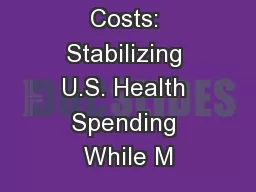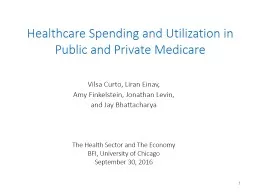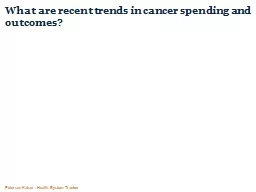PPT-What is behind the recent slowdown in health spending?
Author : debby-jeon | Published Date : 2017-06-17
Source Kaiser Family Foundation analysis of National Health Expenditure NHE data from Centers for Medicare and Medicaid Services Office of the Actuary National
Presentation Embed Code
Download Presentation
Download Presentation The PPT/PDF document "What is behind the recent slowdown in he..." is the property of its rightful owner. Permission is granted to download and print the materials on this website for personal, non-commercial use only, and to display it on your personal computer provided you do not modify the materials and that you retain all copyright notices contained in the materials. By downloading content from our website, you accept the terms of this agreement.
What is behind the recent slowdown in health spending?: Transcript
Download Rules Of Document
"What is behind the recent slowdown in health spending?"The content belongs to its owner. You may download and print it for personal use, without modification, and keep all copyright notices. By downloading, you agree to these terms.
Related Documents














